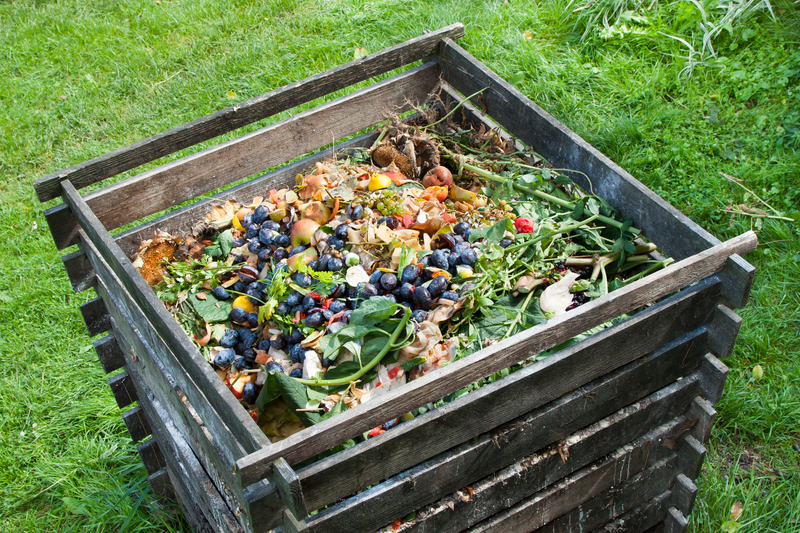From Waste to Masterpiece: The Power of Upcycling
Posted on 06/08/2024
In a world where waste production is reaching alarming levels and natural resources are becoming scarce, the concept of upcycling has gained significant attention. Upcycling, also known as creative reuse, involves transforming waste materials into new products of higher value or quality. This process not only reduces the amount of waste in our landfills but also conserves resources and promotes sustainability. From everyday household items to fashion and furniture, the possibilities for upcycling are endless. In this article, we will explore the power of upcycling and its impact on both the environment and economy.
The Environmental Benefits of Upcycling
One of the most significant advantages of upcycling is its positive impact on the environment. Our planet is facing a daunting challenge with the ever-increasing amount of waste being produced every day. According to a report by the World Bank, global waste generation is expected to reach 3.4 billion tonnes by 2050. By upcycling materials that would otherwise end up in landfills, we can significantly reduce this number.
Upcycling also minimizes the need for new raw materials to be extracted from the earth. Many industries rely heavily on non-renewable resources such as oil for plastics and cotton for textiles. By repurposing old materials, we can conserve these resources and reduce carbon emissions associated with their extraction and manufacturing processes.
Moreover, upcycled products have a lower carbon footprint compared to newly manufactured goods. This is because they require less energy and resources to produce. For example, recycling one tonne of paper saves around 17 trees and 26,500 liters of water. By utilizing wasted materials, we can also reduce pollution caused by incineration or burial of waste in landfills.

The Economic Benefits of Upcycling
Apart from its environmental benefits, upcycling also has a significant impact on the economy. By transforming waste materials into unique and valuable products, upcycling presents a new avenue for businesses and entrepreneurs to generate revenue. This can also create job opportunities, particularly in communities where unemployment is high.
Moreover, upcycling can help reduce production costs for businesses. As mentioned earlier, upcycled products require fewer resources and energy to produce, which can result in significant cost savings. This can ultimately lead to more affordable and sustainable products for consumers.
Tips for Successful Upcycling
Before embarking on your upcycling journey, here are a few tips to keep in mind:
1. Get creative: The key to successful upcycling is to think outside the box and see the potential in everyday items that most people would consider as waste.
2. Start small: If you are new to upcycling, start with smaller projects such as repurposing old clothes or creating home decor from household items.
3. Research techniques: There are many different techniques for upcycling, such as decoupage, painting, and stenciling. Do some research to find the best technique for your project.
4. Use eco-friendly materials: When choosing materials for your upcycling projects, opt for eco-friendly and sustainable options such as organic fabrics or non-toxic paints.
5. Support local upcyclers: Instead of buying new products, support local upcyclers by purchasing their unique creations or attending their workshops to learn new skills.

The Pros and Cons of Upcycling
Like any other concept, there are pros and cons to upcycling. Let's take a look at both sides:
Pros:
- Reduces waste production.
- Conserves resources and reduces carbon emissions.
- Provides economic benefits such as job creation and cost savings.
- Promotes creativity and innovation.
- Increases awareness about sustainability.
Cons:
- Requires time and effort.
- May not be suitable for mass production.
- Quality of upcycled products may vary.
- Some materials may not be recyclable or safe to upcycle.
The Power of Upcycling: Takeaways
Upcycling is more than just a trend; it is a powerful tool for promoting sustainability and reducing waste. By repurposing old materials, we can create new, unique, and high-quality products while also conserving resources and reducing our carbon footprint. Whether you are an individual looking to make a positive impact or a business seeking innovative solutions, upcycling is a win-win situation for everyone involved.
In conclusion, from waste to masterpiece, the power of upcycling shows us that there is value in everything we consider as waste. With creativity and the right techniques, we can transform these materials into something beautiful and valuable. So why throw something away when you can upcycle it into something new? Let's all do our part in protecting our planet by embracing the power of upcycling.

 We charge by volume which ensures that you pay only for the space you use
We charge by volume which ensures that you pay only for the space you use The cost of your job includes the collection of waste, transportation and disposal
The cost of your job includes the collection of waste, transportation and disposal We offer a flexible service and can remove any amount of waste
We offer a flexible service and can remove any amount of waste
